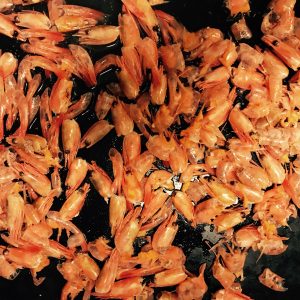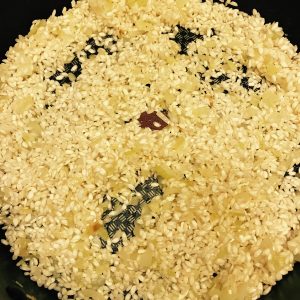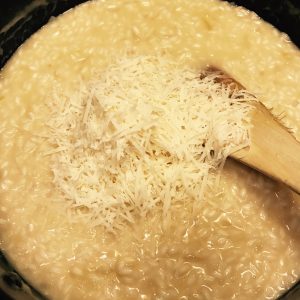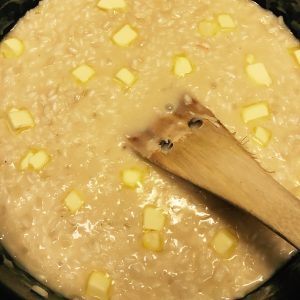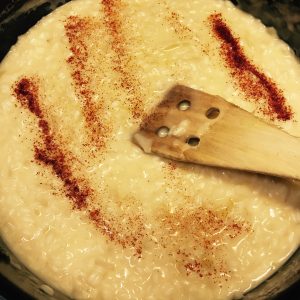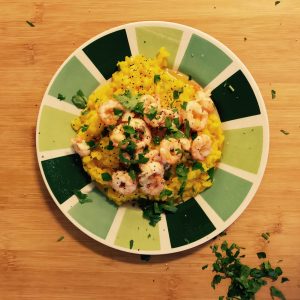 Risotto is just the best thing. I know that now. However, when I was younger (probably well in to my twenties actually) I thought risotto was… something other than it is. At home, it was more akin to fried rice, with some chopped ham or chicken and quite commonly: a mix of peas, corn and paprika (this one!). In the school diner risotto was a weird, gooey meat ragu type thing with rice in it, that for some reason always tasted aggressively sweet. Like really ketchupy sweet. Most likely explained by them putting a LOT of ketchup into it. Actually… thinking about it: growing up, the combination rice and ketchup was a strangely frequent occurrence.
Risotto is just the best thing. I know that now. However, when I was younger (probably well in to my twenties actually) I thought risotto was… something other than it is. At home, it was more akin to fried rice, with some chopped ham or chicken and quite commonly: a mix of peas, corn and paprika (this one!). In the school diner risotto was a weird, gooey meat ragu type thing with rice in it, that for some reason always tasted aggressively sweet. Like really ketchupy sweet. Most likely explained by them putting a LOT of ketchup into it. Actually… thinking about it: growing up, the combination rice and ketchup was a strangely frequent occurrence.
So let’s just get some things straight about what risotto actually is. It’s rice, and it can be any type of rice. Most commonly though, it’s a type with quite large grains that release starch when cooked in a way that creates a wonderfully creamy texture. It’s broth, it’s wine (usually white) and almost always cheese (usually parmigiano). So what’s up with that rice? Well, it has to do with the chemical composition of the starch. Here’s some science stuff from Serious Eats:
“Rice contains two molecules that make up its starch content, amylose, and amylopectin. Generally speaking, rices with a higher proportion of amylopectin to amylose will tend to soften more completely and thicken their sauce more strongly. All risotto starts with a short- to medium-grain form of rice high in amylopectin. It’s the exact ratio of amylose to amylopectin that determine the final texture of your rice and sauce.”
In Sweden, you tend to see three type of grains meant for risotto: Arborio, Carnaroli and Avorio. Arborio has the largest grain and creates the most creamy result. Carnaroli gets you a firmer result and Avorio even more so (I tend to really like Avorio). Obviously, what dish you’re preparing can guide the type of rice, but make sure to try them all to see which you like best in various situations.
This is my favorite kind of run-of-the-mill risotto recipe and it’s real easy to make.
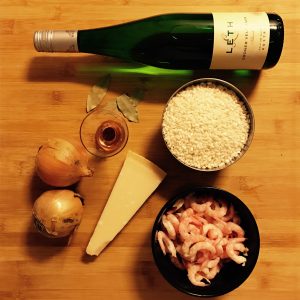 This recipe is for 4-5 people. Generally, some 80 g of rice equals a big portion. From start to finish this should take circa 1 hour and 30 min, if you’re starting from scratch.
This recipe is for 4-5 people. Generally, some 80 g of rice equals a big portion. From start to finish this should take circa 1 hour and 30 min, if you’re starting from scratch.